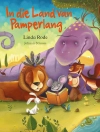In ‘The Golden Goose Book, ‘ L. Leslie Brooke presents a captivating collection of nursery tales adorned with his distinctive illustrations, which seamlessly blend humor and whimsy. The book revitalizes classic folklore, offering a contemporary lens on the traditional stories while maintaining the charm and simplicity that characterizes the genre. Brooke’s narrative style is marked by a rhythmic cadence that engages young readers, making it an ideal companion for bedtime stories. The interplay of text and illustration invites a visual and imaginative exploration, echoing the rich literary context of early 20th-century children’s literature that sought to bridge the gap between moral instruction and entertainment. L. Leslie Brooke was a British illustrator and writer, renowned for his ability to captivate the imaginations of children through his art. His background in art and education profoundly influenced his approach to storytelling, as he aimed to instill a love of reading in the younger generation. Brooke’s own experiences with folklore and traditional tales encouraged him to curate and illustrate stories that resonate with childhood wonder, making them accessible and enjoyable for his audience. I highly recommend ‘The Golden Goose Book’ to both children and adults seeking to revisit the delightful world of fairy tales. Its enchanting prose and exquisite illustrations promise to evoke nostalgia while fostering a love for reading in young minds. This book is a timeless treasure that deserves a place in every home’s library, enriching the literary journey for generations.
Circa l’autore
Leonard Leslie Brooke, commonly known as L. Leslie Brooke, was an eminent British illustrator and writer renowned for his contributions to children’s literature in the early 20th century. Born on September 24, 1862, in Birkenhead, England, Brooke showcased his artistic talent early in life, ultimately dedicating his career to creating enchanting illustrations and stories that continue to capture the imagination of children and adults alike. Brooke’s most notable work, ‘The Golden Goose Book’ (1905), is a collection of classic children’s tales including ‘The Three Little Pigs, ‘ ‘Tom Thumb, ‘ ‘The Golden Goose, ‘ and ‘The Three Bears, ‘ each vividly brought to life through his exquisite illustrations and narrative charm. His literary style often intertwined gentle humor with whimsy, thereby rendering his books not only delightful to children but also appealing to the adult reader’s sense of nostalgia. Brooke’s contribution to children’s literature extends beyond this seminal work, with other significant titles such as ‘Johnny Crow’s Garden’ (1903) and ‘Ring O’ Roses’ (1922), further solidifying his legacy as a gifted storyteller and artist. His works exhibit a clear influence of the Victorian and Edwardian eras, reflecting the cultural values and aesthetics of the time. Brooke passed away on May 1, 1940, but his creative output remains a testament to his skill in bringing joy and wonder to the world of children’s books, thereby securing his place in the annals of children’s literature.












